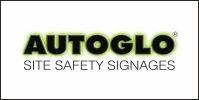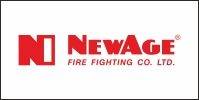 Detailing the roles and responsibilities associated with awareness-, operations- and technician-level response
Detailing the roles and responsibilities associated with awareness-, operations- and technician-level response
In today’s world, EMS crews may think they are responding to a medical call only to find themselves accidentality walking into an illicit drug lab. Engine crews may think they are responding to a motor vehicle incident only to roll up on a gasoline tank truck fire. Police officers are conducting more welfare checks, only to find someone who chose “suicide by hazmat.”
Each of these types of calls requires first responders to execute their level of hazmat training and call for assistance from a hazardous material response team (HMRT).
Here we’ll cover the various roles and responsibilities of first responders who are called to hazmat or weapons of mass destruction (WMD) incidents as well as their training levels.
Defining Hazardous Materials
According to NFPA 472: Standard for Competence of Responders to Hazardous Materials/Weapons of Mass Destruction Incidents (soon to be replaced by NFPA 470), there are multiple definitions for hazardous materials:
- The U.S. Department of Transportation (DOT) uses the term hazardous materials to cover 11 hazard classes, some of which have subcategories called divisions.
- The EPA uses the term hazardous substances for chemicals that, if released into the environment above a certain amount, must be reported and, depending on their threat to the environment, federal involvement in handling the incident can be authorized.
- OSHA uses the term hazardous chemicals for any chemical that would be a risk to employees if they were exposed in the workplace.
- In the United Nations model codes and regulations, hazardous materials are called dangerous goods.
For the sake of simplicity, hazardous materials will be defined here as any substance that can cause harm. A WMD, on the other hand, is a substance that can cause harm to many and has criminal intent associated with its release. NFPA 472/NFPA 470 defines a WMD as: “(1) Any destructive device, such as any explosive, incendiary, or poison gas bomb, grenade, rocket having a propellant charge of more than four ounces, missile having an explosive or incendiary charge of more than one quarter once (7 grams), mine, or device similar to the preceding description; (2) any weapon involving toxic or poisonous chemicals; (3) any weapon involving a disease organism; or (4) any weapon that is designed to release radiation or radioactivity at a level dangerous to human life.”
 Hazardous materials releases and incidents involving WMDs require many of the same resources, but the strategies, tactics and techniques vary. For example, a chlorine railcar with an accidental release can be mitigated by the railroad, hazmat team, local first responders and environmental contractors. However, a chlorine railcar that is sabotaged and used as a WMD will require the aforementioned resources in addition to several government organizations, like the FBI.
Hazardous materials releases and incidents involving WMDs require many of the same resources, but the strategies, tactics and techniques vary. For example, a chlorine railcar with an accidental release can be mitigated by the railroad, hazmat team, local first responders and environmental contractors. However, a chlorine railcar that is sabotaged and used as a WMD will require the aforementioned resources in addition to several government organizations, like the FBI.
In the first example, a hazmat team and the railroad can work together to come up with an offensive strategy to stop the leak. In the second example, the first-arriving companies must recognize there is criminal intent and watch for the perpetrators, booby traps and secondary devices. Then, as the chemical is releasing, they must devise a strategy that saves the greatest number of lives.
The strategy for the sabotaged chlorine railcar will likely be defensive or non-intervention until the criminal element has been secured, such as a bomb squad disabling all devices and law enforcement securing the area.
Hazmat Incidents Roles And Responsibilities
Regardless of whether a hazmat release is accidental, personnel and responders have specific roles based on their level of training and experience. According to NFPA 472 (NFPA 470), hazmat emergency responders include the following:
- Awareness-level personnel
- Operations-level responders
- Operations-level responders assigned mission-specific responsibilities
- Hazmat technicians
- Incident commanders (ICs)
- Specialist employees
- Hazmat officers
- Hazmat safety officers
Awareness-level personnel
Awareness-level personnel are those who will likely discover a hazmat release and have been trained to initiate emergency notifications.
Security guards and administrative staff at chemical plants are usually awareness-level trained. Their role is to secure an incident site, identify the materials involved and make the appropriate requests for additional resources.
Some law enforcement personnel, EMS crews and volunteer firefighters are trained to the awareness level. They should initially take a nonintervention approach. Often, they are first on scene and collect the first few minutes of information. They too should begin to secure an incident site, identify the materials involved, and make the appropriate request for additional resources.
Operations-level responders
Operations-level responders are often the professional firefighter suppression personnel that arrive on scene after 911 has been notified. The first engine company may have up to four hazmat operations-level firefighters. Their role is to analyze the situation, decide if more resources are needed, implement a strategy (offensive, defense or nonintervention) and evaluate the progress of the incident. They typically take a defensive strategy unless they are specifically trained in a mission-specific offensive skill.
For example, two firefighters may enter a facility to turn off a valve remotely with the guidance of plant personnel, without getting into any product. However, if there is a release of a product and an offensive strategy is needed that will cause responders to become contaminated or exposed, then hazmat technicians are required.
Hazmat technicians
Hazmat technicians have more training than awareness- and operations-level personnel. They can take a more aggressive role using chemical protective ensembles to stop leaks by plugging, patching or other means in hazardous atmospheres. Hazmat technicians may be firefighters assigned to a HMRT, bomb squad members or plant personnel. Additionally, a hazmat technician may or may not be assigned to a HMRT. If they are, they need to meet medical surveillance requirements within OSHA 1910.120.
Additional personnel involved in hazmat incidents
ICs, specialist employees, hazmat officers and hazmat safety officers are additional personnel that respond to hazmat/WMD incidents or with HMRTs. Conducting a needs assessment and gap analysis helps determine where your resources are heavy and where they fall short. For example, if a greater metropolitan area has four Type I hazmat teams all fighting for the grant funding, perhaps it is smarter to utilize those resources through Memorandums of Agreement (MOAs) as opposed to adding more teams. On the other hand, if there are no HMRTs in your area, perhaps it is time to create one for a large geographical area that will serve surrounding communities.
Here are some things to consider when deciding on your hazmat program:
- Needs assessment and gap analysis results
- Cost considerations
- Grant requirements
- Duplication of equipment that a neighboring jurisdiction already has
- Compatibility with neighboring jurisdictions
- Certifications required to use equipment (i.e., offensive strategies require hazmat technician-level certifications; defensive strategies may only require hazmat operations-level certifications)
- Continued maintenance program requirements (i.e., calibration)
- Equipment expiration (i.e., assays, colorimetric tubes)
- License agreements (annual costs and reach back capabilities)
- Perishable skills of the infrequent user at high-risk low-frequency events as well as the liability associated with human error. For example, is Hazmat/WMD response the user’s additional duty or is it their primary job?
When selecting program training (awareness, operations, technician), the organization should conduct a needs assessment and gap analysis involving the following steps:
- Identify the required response plan capabilities for your hazmat/WMD program.
- Identify current capabilities, including other plans and mutual-aid agreements already in place. Additionally, identify the capabilities of other agencies (FBI, EPA, Health Department, civil support teams, bomb squads and local hazmat teams).
- Identify gaps between required and current capabilities, along with necessary redundancies.
Identify capabilities required to bridge gaps.
The needs assessment and gap analysis provide an opportunity to look at your department’s current resources and equipment. It’s also an opportunity to evaluate how the sharing of resources fits into your current mutual-aid agreements.
Once department leaders have determined department needs and existing area equipment caches, they will be in a better position to match their available funding to the training and equipment they need.
Hazmat Training
An experienced engine crew responds to a motor vehicle accident with a driver pinned. The officer requested HMRT to mitigate diesel spilling from the saddle tanks. Prior to HMRT arrival, firefighters did as they were trained and contained the runoff using a sand-like material from the trailer. They did not know until after HMRT arrived and contacted the company that the product was “floor sweep.” Floor sweep is an industry term for leftover product that falls on the floor, which is then swept up and sold at a cheaper price. It was essentially fertilizer that was mixed with diesel fuel. (Photo/Fire Near Miss)
The most difficult part of training hazmat responders is deciding the type of training they need – awareness, operations or technician. However, once this has been determined, there is an abundance of free training offered across the nation to all levels. From grant-funded classes to training exercises at local chemical plants, it is easy to access training.
Firefighters, law enforcement and EMS providers can attend numerous classes sponsored by the DHS, International Association of Firefighters (IAFF) and other organizations. There are classes located across the country, or your organization can host classes. Nearly all are free and only require the organization requesting the training to allow their people time off to attend. A good place to start is the FEMA’s Center for Domestic Preparedness training-finder tool.
Other training, and perhaps the most practical, is to tour local target hazards that have a potential for a catastrophic accident. Find out what chemicals exist in your area. Ask industrial facilities for a tour and make friends with decision-makers and emergency response personnel. This is VERY valuable when something goes terribly wrong.
Training programs may be influenced by MOAs. Industry, hazmat teams and other stakeholders concerned with terrorism may have assets that can be shared. For example, it may be necessary for your “area monitoring equipment” to have licenses that allow you to be compatible with a neighboring organization’s equipment.
The best approach for identifying any hazard is to have several different methods of detection. For example, if you are trying to detect or verify ammonia is present, you may decide to use a multi-gas meter with a photoionization detector (PID), handheld meter with an ammonia sensor, pH paper for corrosivity, and a colorimetric tube to back up the previous findings. All have limitations but together they provide responders with good information.


















































